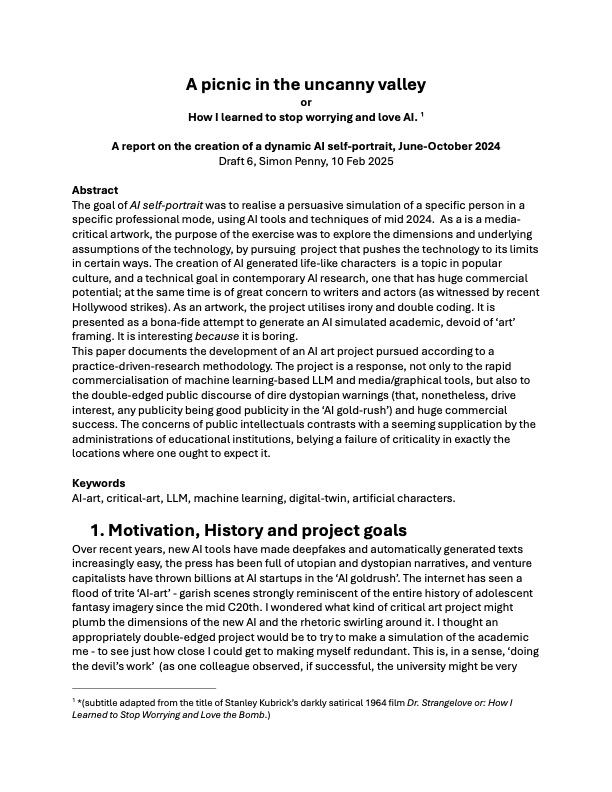Professor Simsimon – an AI self-portrait
June-October 2024Simon Penny
Introduction
This project was motivated by observation of the hype-driven panic and schlocky products of contemporary internet-based machine-learning AI. What resulted was an attempt to produce a dynamical AI self-portrait we call Simsimon. Specifically, it is a ‘portrait of the artist as a professor’ - it’s interesting because it’s boring. The system generates papers and lectures I might have given (based on 20 years of my professional writng) but haven’t.
The attached paper discusses aesthetic, critical and technological issues arising.The project is consistent with my long term ‘critical technical practice’ (Agre). Reflections are offered on questions of style, the ‘regression to the mean’ syndrome, and similarities and differences between the new AI and GOFAI (good old fashioned artificial intelligence – Haugeland).
A Picnic in the Uncanny Valley
How I learned to stop worrying and love AI. A report of the creation of a dynamic AI self-portrait.
Open PDF